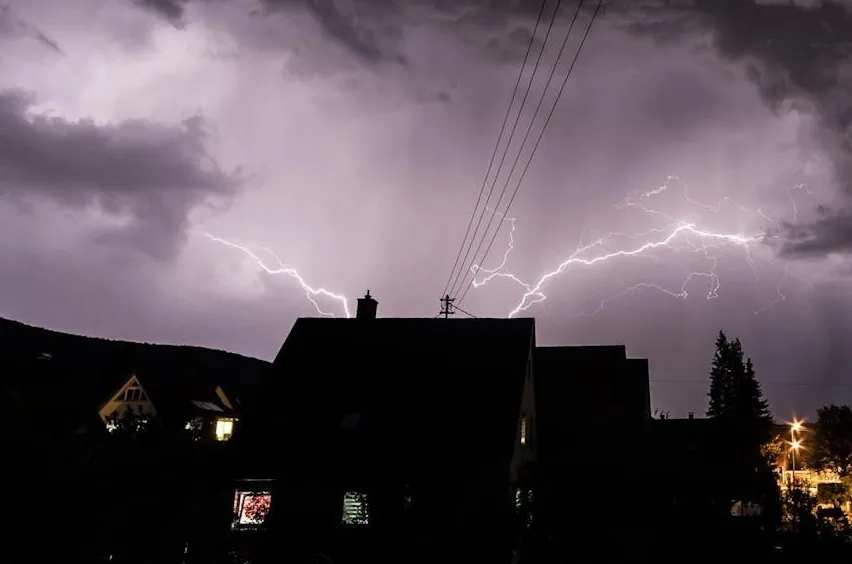Posted in:
When a storm strikes, the damage it can inflict on your home’s roof can be devastating. For homeowners, the aftermath can often involve dealing with significant damage to your property, particularly the roof.
While it may feel overwhelming to address the repairs, tackling storm damage quickly is incredibly important. Repairing storm damage to your roof is crucial to maintaining the structural integrity, safety, and value of your home. At Cherry Roofing and Siding, we aim to help you understand what to do after experiencing storm damage to your home so you can prevent the damage from causing serious, long-term issues.

Why is it Important to Address Storm Damage?
Storms can cause significant damage to your property and impact your ability to safely live in your home. Storm damage can affect the physical structure of your home and lead to the development of issues that can impact the health and safety of you and your family.
The Risk of Compromised Structural Integrity
Storm damage can compromise the structural integrity of your roof and pose significant risks to the safety of your home. Water infiltration can weaken the framework of your roof, causing your roof to sag or even collapse if not addressed quickly. Large objects and water leaks can impact your roofs, walls, or the foundation of your home, leaving your home at risk for serious problems down the line.
Even minor water damage can weaken the overall structure of your home. Continuous exposure to outdoor elements can lead to damage that can be even more costly to repair. Addressing storm damage quickly can ensure your home remains safe for you and your family to live in.
Preventing Costly Water Damage
After a storm hits, one of the most immediate concerns for homeowners is the risk of water infiltration. Water can infiltrate your home through damaged or missing shingles, broken windows, or compromised siding. Water damage can be particularly dangerous, causing extensive damage to your walls, ceilings, and personal belongings. Water infiltration can also lead to issues such as rot, mold growth, and structural damage.
Quickly repairing storm damage to your roof can keep water from entering your home and minimize any costly interior damage. It is important to consult a professional to seal any vulnerabilities in your home to prevent water infiltration from causing long-term problems.
Combating Mold Growth
Moisture in your roof or home can create the perfect environment for mold and mildew to flourish. Mold growth can pose significant health risks to you and your family and cause damage to your property that can be difficult to repair. Mold can cause respiratory issues, allergic reactions, and other health problems. Immediate repair efforts can combat mold growth so you can protect your loved ones and maintain a healthy home.
Safeguarding Property Value
Neglecting storm damage repairs can significantly impact the value of your property. A damaged roof can not only look unappealing, but it can lead to interior damage that can deter potential buyers and decrease the value of your home.
Unrepaired storm damage can also cause serious ongoing issues that can cause your property to depreciate in value. For instance, leaks and water damage can affect the structure of your home and make it more difficult to sell. Prioritizing repairs to your home after a storm can safeguard the value of your property over time and protect your investment should you decide to move in the future.
What Should You Do After a Storm?
A sudden storm can catch you by surprise and cause unexpected damage. After a storm hits, there are several things you can do to protect yourself and your family from unsafe conditions.
Identify Damage
After a storm, safety should be your top priority. Cautiously check for any immediate hazards such as broken trees, downed power lines, flooding, or structural damage to your home. Avoid any parts of your home that appear unsafe to be in and remain cautious as you begin to assess the damage.
Document Storm Damage
Before you begin to remove debris from around your home and repair the damage, be sure to take detailed photos and videos of all destruction to your property. This documentation will help you through the insurance claim process by providing evidence of the extent of the storm damage to your home.
Temporary Repairs
If possible, make temporary repairs to your home to prevent further damage. Broken windows and roofs can be covered with plastic sheets or tarps to prevent water from leaking into your home, and buckets can be used to keep water from pooling on your floors. Small, temporary measures can protect your home from further issues until you can properly repair the damage.
Contact Your Insurance Company
Get in touch with your insurance company as soon as possible to report the damage. Be sure to submit any documentation you gathered and follow their instructions when filing a claim. Following proper procedures can help expedite the claims process.
Promptly addressing damage after a storm can also demonstrate to your insurance company that you are taking proactive measures to maintain your property. Obtaining a repair estimate from a reputable contractor can help you receive compensation from your insurance company. However, before you file a claim, it is important to understand your insurance policy so you know exactly what your insurance covers.
Hire a Professional
Contact a professional roofing contractor to properly assess the damage to your home. A reputable contractor will thoroughly inspect your property and give you an in-depth analysis of the repairs needed to keep your home safe enough to live in long-term.
Keep Your Home Safe
Repairing storm damage quickly is important to maintain the structural integrity, safety, and value of your home. Addressing storm damage promptly that could cause further damage can save you money and protect your health and well-being.
At Cherry Roofing and Siding, we understand the importance of urgently addressing storm damage and restoring the safety of your home. Contact us today to learn more about how we can repair your home in the aftermath of a storm.
Jul 19, 2024







